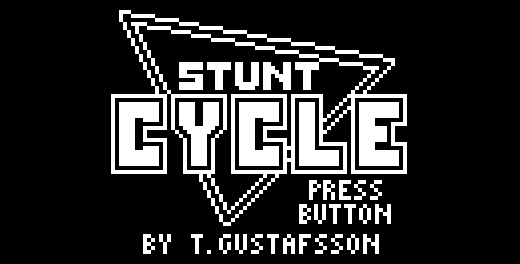Atari Stunt Cycle with Arduino
Back in 1976
Stunt Cycle's premise was straightforward. Players controlled a daredevil motorcyclist, aiming to jump over an increasing number of buses. The game was inspired by the famous stunts of Evel Knievel, an iconic figure in the world of daredevilry. Players used a handlebar control to accelerate and a button to time their jumps. The goal was to clear as many buses as possible without crashing.
The game's graphics were rudimentary by today's standards, but at the time, they represented a significant step forward in visual design. Stunt Cycle featured a black and white display with simple line graphics to represent the motorcycle and buses. The sound effects, consisting of basic beeps and engine sounds, added to the gamers experience.
What set Stunt Cycle apart was its physicality. The handlebar controller gave players a sense of real motorcycle control, making the game more engaging and hands-on. This level of physical interaction was a novelty in arcade games of the era.
Stunt Cycle also held the distinction of being one of the early examples of a game with a level progression system. As players succeeded in jumping over more buses, the difficulty increased, adding more buses and requiring more precise timing.
My Arduino version
First things first. If you want to play the original space exactly as it was, download DICE-emulator. My Arduino version is my interpretation of the game. All the basic game mechanics are present, but again I took some artistic liberty.
There are many differences to the original game. First and obvious one is the throttle system. I didn't build handlebars. Just a button to control the speed. Very simple one button interface, so the hardware side is easy. Other differences include reduced number of busses. Only eight on my version. Display is too small and spites are too large. But I think it's enough. And in anyway there are several ways to fail: If you go too fast, you crash. If you go too slow, you will also crash. If your jump is too short, you will crash. And if you jump too far you will... crash. And also if you throttle too hard, again you WILL crash!
50 years later
The game's legacy extends beyond its immediate impact. Stunt Cycle influenced a generation of racing and stunt games. Its emphasis on skill, timing, and progression laid the groundwork for future games in the genre.

